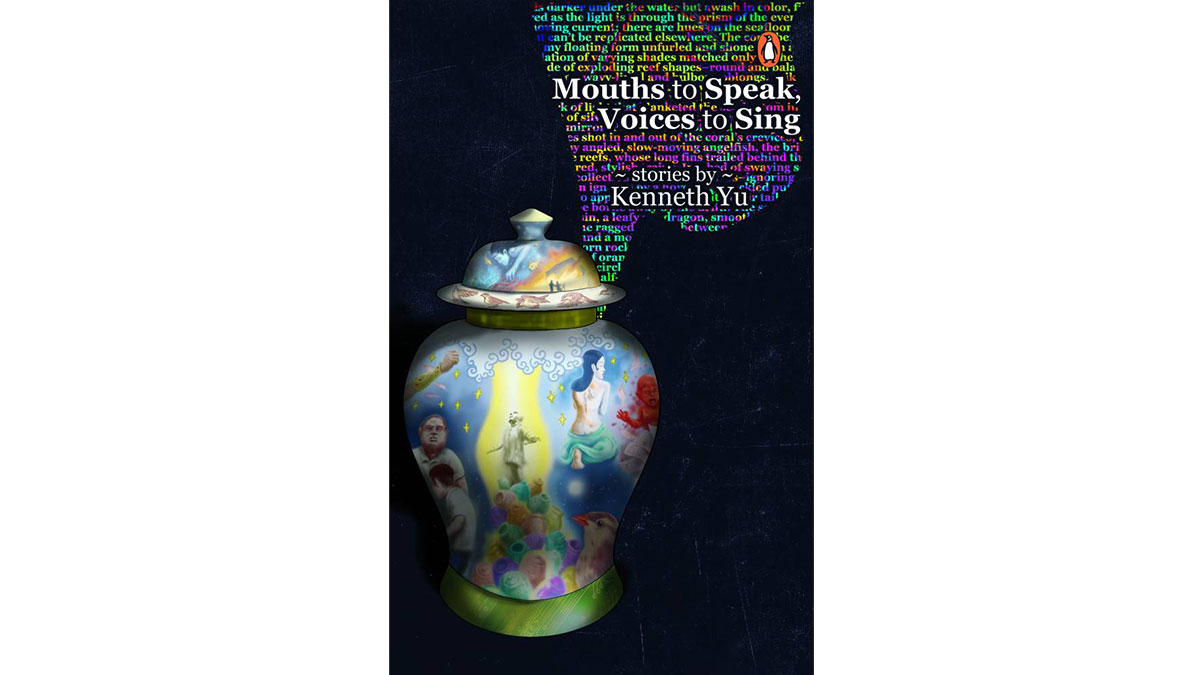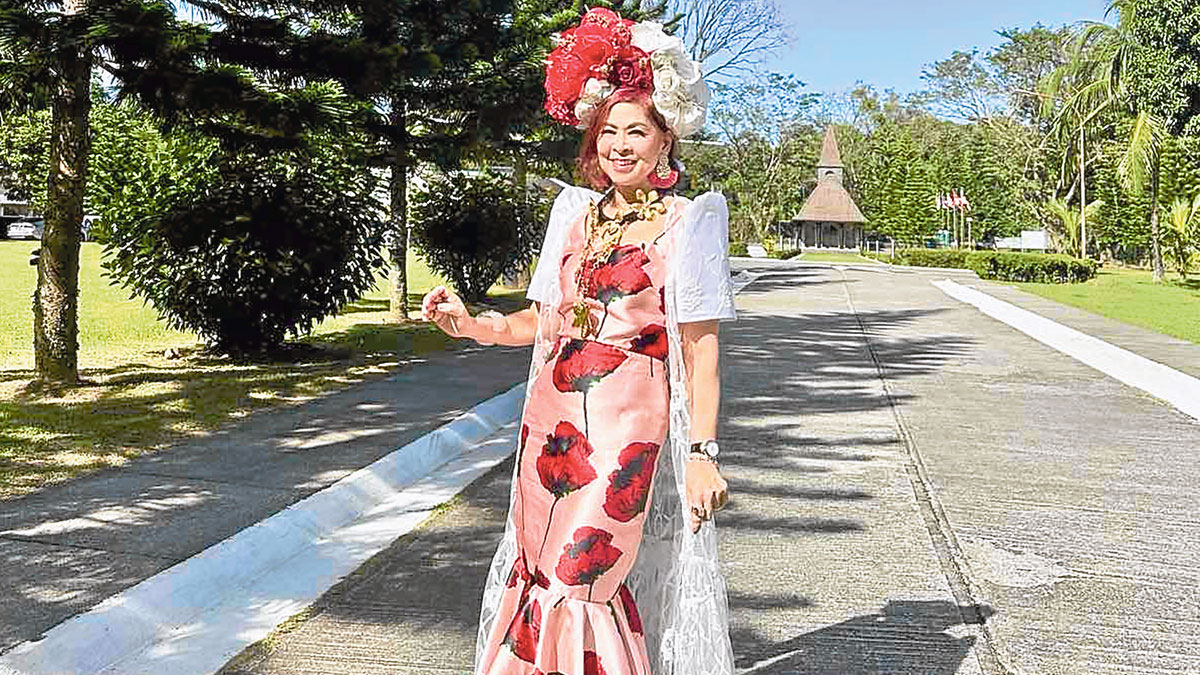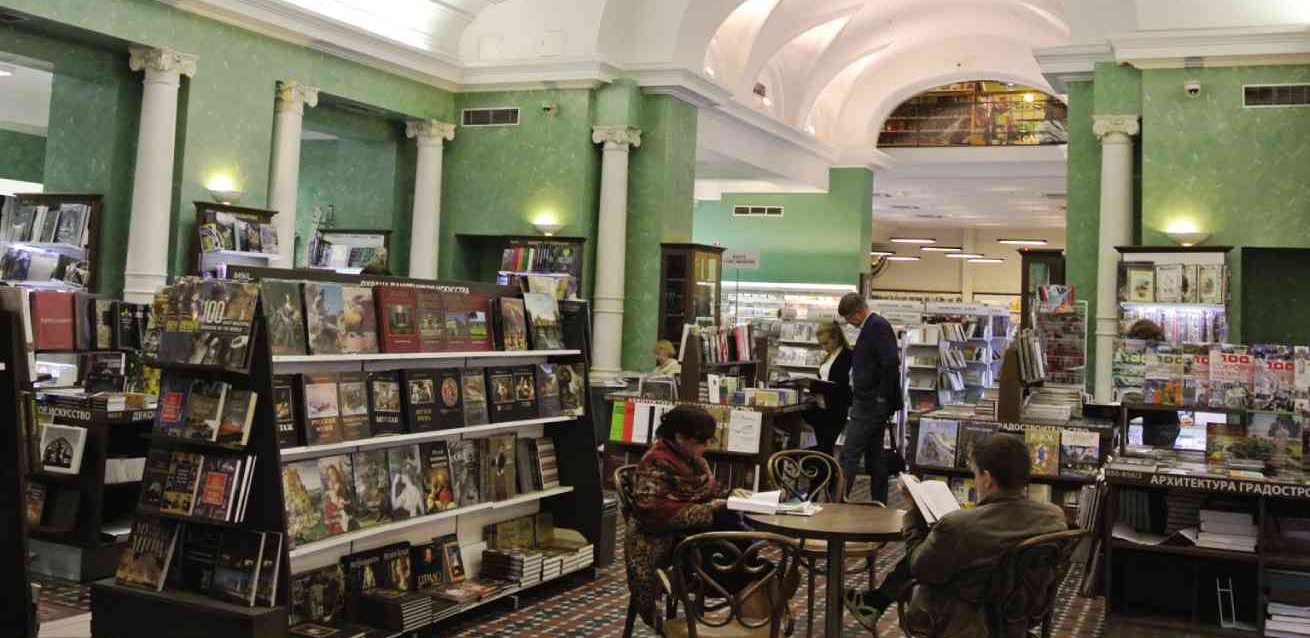
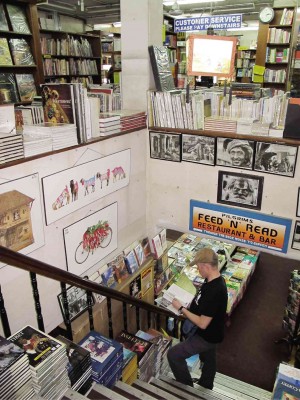
My friend, says his wife, can smell a Zegna store from blocks away. I smell bookshops.
Bookshops fascinate me.
It’s feeling the pages, the smell of paper and ink, and breathing in the dust stuck between the bindings and pages, that add to the joy of hours of browsing, of being lost among books, books, and more books.
It’s impossible not to come out with a stash of books after visiting Pilgrim’s in Kathmandu.
Pilgrim’s is a nondescript shopfront squeezed in between rows of tiny shops selling identical souvenirs and pashminas in chaotic Thamel, Kathmandu’s tourist quarter. Pilgrim’s was an improbable surprise when I first stumbled upon it.
It’s not improbable, really, because Thamel is a throwback to the good old hippie days of the 1960s when Kathmandu was the counterculture mecca, where the coolest of the cool tripped to, and dropped out for a while (an aging few are still there, still dropped out). A city-center street has kept its “Freak Street” name from those days.
Pilgrim’s is exactly the kind of bookshop-cum-head shop that I remember from my college days, where you could get stuff for your head sold from somewhere behind the counter (definitely not from Pilgrim’s)—incense, beads, flowing cotton clothes, esoteric books.
Pilgrim’s carries all of the above plus an astonishing collection of books lined up on shelves, piled atop tables, stacked on the creaking floor or wooden stairs. It’s a rambling two-story shop cobbled from adjoining apartments.
And what a shop it is. It has a definitive collection of Indian, Nepalese and Himalayan titles. It carries valuable first editions, the latest novels and Western classics. But probably the best thing at Pilgrim’s is that it can bind your worn-out books in hand-sewn leather.
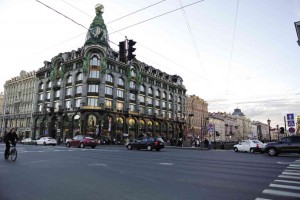
Playing softly in the background are Tibetan chants (CDs are available, of course). And to lift spirits to nirvana, incense floats in Pilgrim’s ether. It’s a trip.
Russia
Meanwhile, books are displayed in an outstanding Art Deco setting at the House of Books on Nevsky Prospekt in St. Petersburg (Russian Federation).
Nevsky Prospekt is urban elegance personified. Conceived as Saint Petersburg’s front window, the wide avenue is a promenade planned by Peter the Great that connects the Moscow Train Station to the Admiralty and Winter Palace on the banks of the Neva River.
On the avenue is the most graceful architecture in the stunning city where neoclassical palaces of the former nobility, churches and state buildings are painted in different pastel shades, pink, blue, green, yellow, the colors of the gentle northern sunset.
Standing on the intersection of Nevsky Prospekt and Griboyedov Canal is one of the most eye-catching buildings in the spectacular city, the pastel-green, six-story, glass-domed Art Nouveau structure originally built in 1904 as the headquarters for the Singer Sewing Machine company.
After the 1919 October Revolution, building ownership transferred to the State Publishing House, which opened the city’s largest bookstore which still exists in its original Art Deco splendor.
Even the little tea shop, set in a clearing between varnished wooden bookstacks beneath a glass vault hand-painted in Art Deco florals, is an Old World sanctuary of round marble-topped tables and bentwood chairs where people leaf through books and speak in whispers.
Totally in keeping with the elegant aura of St. Petersburg, the magnificent setting glows with books. The glow is here for me to imbibe but the books are not for me to take home. Except for a small foreign language section, the books were in Russian.
Paris
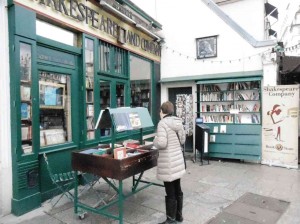
In 1951, American George Whitman opened Shakespeare and Company on the left bank of the Seine in the shadow of Notre Dame Cathedral.
Originally called Le Mistral, it changed to its present name in 1964 to celebrate Shakespeare’s 400th anniversary and to honor the legendary Sylvia Beech, who opened the original Shakespeare and Company at another Paris location in 1919. It was the Parisian gathering place of the great expat writers of the time—Hemingway, Gertrude Stein, Pound, Fitzgerald, Eliot.
Shakespeare and Company today is a “winding, twisting, climbing labyrinth of books, a literary commune, a shelter for writers, a refuge for book lovers. It is, as my father George Whitman said, a novel in three words,” writes Sylvia Whitman, who now manages the shop.
Shakespeare and Company is more than a bookshop. It is the center of a literary lifestyle that creates a “welcoming home for writers and readers from around the world, with books to buy or borrow, author readings, and sometimes a bed [for visiting writers].”
Solidaridad
And at home? Head for Solidaridad, where the best collection of books by Filipino authors are found, and where the added incentive to take the trip to Ermita is to chance upon the legendary F. Sionil Jose, nationalist and raconteur, National Artist and respected writer.
Opening a box containing a book ordered online somehow cannot replace the heady feeling of choosing a book after a long browse in a bookshop.
E-mail the author at pride.place@ gmail.com.














